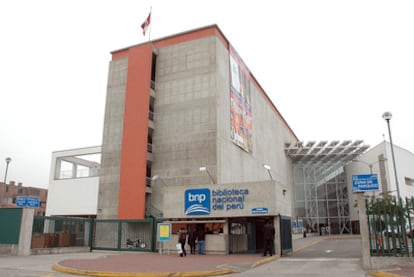Stolen library books pain Peru
Lima's main archive reports the theft of 932 ancient and valuable works
In February, the National Library of Peru reported that there have been regular thefts of some of its most historic volumes. Five months later, after an exhaustive inventory that saw the library closed to the public, director Ramón Mujica Pinilla has reported that a total of 932 ancient and valuable books and manuscripts have been lost.
Some of these volumes date back to the 16th and 17th centuries, including the pocket manuscript Una vida (A Life) by Saint Toribio de Mogrovejo, written in 1679. It was taken by one of the workers during the inventory, Mujica said, adding that the theft has been caught on surveillance video. Another work that has disappeared is an incunabulum by Dutch humanist Desiderius Erasmus of Rotterdam, which was published in Paris in 1524.
One priceless manuscript was taken by an inventory worker
Included on the lists of missing works are 81 books from the ancient and general archives, 125 books from the general collection, 414 valuable manuscripts that were bequeathed by the historian Raul Porras Barrenechea, and 32 volumes of what are considered bibliographic gems.
Among the most painful losses are three books that were looted during the occupation of Lima during the War of the Pacific (1879-1883) and had recently been returned by the Chilean government. According to Mujica, these books were never made available to the public because they had not been catalogued.
Silvana Salazar, technical director for the library, told a news conference that most of the stolen books were related to the conflict between Peru and Chile. After the five-month inventory, it was determined that the National Library of Peru has an endowment of 150,894 books and about 320,000 other documents of historical value.
"The library must be declared in a state of emergency," Mujica said, adding that during the inventory he had to request help from the private sector because the government made no contributions. Although a new library opened last year, security measures remain weak.
During the inventory, Telefónica en Peru provided security cameras to monitor workers while they took stocks in vaults and rooms and moved the books through the corridors. It was with these cameras that the theft of the 1679 manuscript was captured. "Now we have to give [the cameras] back and the collections will be unprotected once again," Mujica said.
The National Library finally reopened its doors this week, but Mujica is demanding more government aid. But due to an emergency decree that imposed a series of austerity measures for the final months of President Alan García's government, the library has run out of resources and cannot spend money on security improvements.
"The state needs to make investments to defend the nation's heritage because we still have an inventory to take," Mujica said. Among the works that have not been catalogued are an extensive collection of maps, music scores, another group of old books, and some seven million volumes that make up a collection of modern texts.
Although it may seem unusual, the National Library of Peru does not have a bibliographic management software system, which complicates the task of cataloging works.

Tu suscripción se está usando en otro dispositivo
¿Quieres añadir otro usuario a tu suscripción?
Si continúas leyendo en este dispositivo, no se podrá leer en el otro.
FlechaTu suscripción se está usando en otro dispositivo y solo puedes acceder a EL PAÍS desde un dispositivo a la vez.
Si quieres compartir tu cuenta, cambia tu suscripción a la modalidad Premium, así podrás añadir otro usuario. Cada uno accederá con su propia cuenta de email, lo que os permitirá personalizar vuestra experiencia en EL PAÍS.
¿Tienes una suscripción de empresa? Accede aquí para contratar más cuentas.
En el caso de no saber quién está usando tu cuenta, te recomendamos cambiar tu contraseña aquí.
Si decides continuar compartiendo tu cuenta, este mensaje se mostrará en tu dispositivo y en el de la otra persona que está usando tu cuenta de forma indefinida, afectando a tu experiencia de lectura. Puedes consultar aquí los términos y condiciones de la suscripción digital.








































